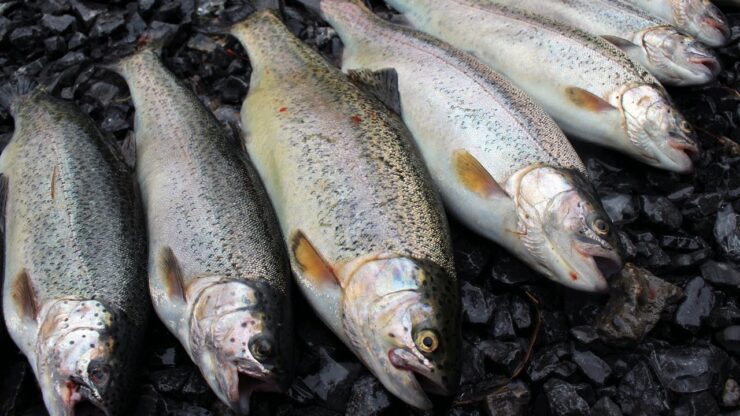Even though there are all kinds of fishing you can do, nothing seems to have the soul-cleansing mojo that trout fishing does. I’m not sure why. Trout aren’t that big, and while they do put up a good fight, it is short-lived. They are great table-fare, but not any more than other fish. Maybe it is the settings. Or maybe it is the degree of concentration required. Whatever it is, there is nothing quite like trout fishing.
Most people associate trout with fly fishing, but that is much too broad a subject to cover here. I could write several books on fly fishing, and not even scratch the surface. I love fly fishing for almost all species of fish. But here, I am just going to talk about fishing with normal equipment. I have known some people that have foregone trout because they thought it requires you to fly fish, which has a learning curve to it, or that the required equipment is very expensive. Nothing could be further from the truth. I have caught trout with nothing more than a cane pole and a worm.
It is my intention to dispel a lot of the misinformation surrounding trout, and maybe some will take the opportunity to try the wonderful world of trout fishing. But I will warn you…it can change your life.
Table of Contents
ToggleWhy Fish For Trout?
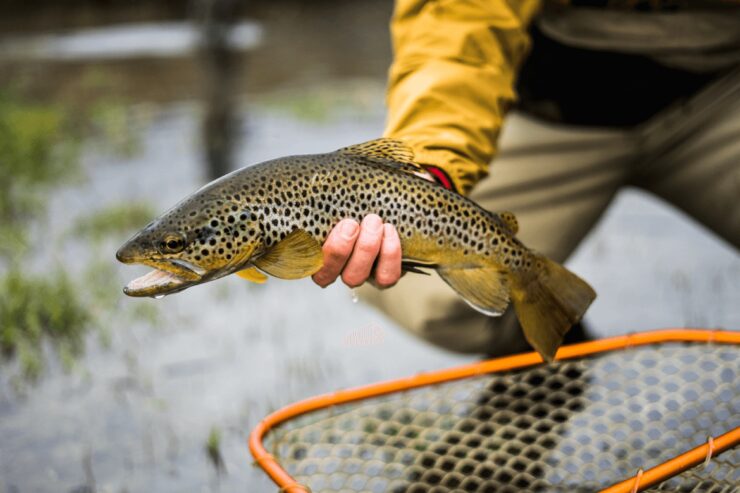
Trout has a long and impeccable history as one of humankind’s first recognized gamefish. The Roman Claudius Aelianus described fishing for trout with flies as early as 200 AD, and there is good evidence that Greeks were making crude poles to catch trout as early as 41 AD. Before that, we have strong evidence that people attempted to catch trout with minnows, crude lures, and handlines. I doubt that this was very successful, but I’m sure they managed to catch a few, even by accident. The reason trout were concentrated on so much back then was that the available equipment could not handle anything much bigger than trout. Even a modest-sized bass would have destroyed the horsehair lines, and thin wooden poles they had to use. There weren’t even any reels to help fight the fish.
Fast forward to 1496 AD. Dame Juliana Berber published the first in-depth study of fishing, “The Treatyse of Fysshynge with an Angle” …for trout of course. In 1653, Izaak Walton penned the classic, “The Compleat Angler”. I am pretty sure every serious trout angler has a copy of both of these books in their collection, or on their computer. They are both available for free online on many websites. Until mechanical reels became available sometime in the mid 19th century, trout and maybe crappie and sunfish were all the equipment could handle, at least in freshwater.
We owe a huge debt of gratitude to Frenchman Maurice Jacquenim, who invented the world’s first successful spinning reel, the Mitchell 300 (still my favorite) in 1948. This was the birth of modern fishing. Texan R.D. Hull put the icing on the cake when he created the world’s first successful spin casting reel in 1954…the outstanding Zebco 33, (still one of the greatest all-around spin casting reels there is. I have 3 of them at present, some older than you I am betting…). You would be hard-pressed to find any angler today that hasn’t used a Zebco 33 at some point in their lives.
With the advent of the spin casting reel, anyone can fish for trout, bass, or most any other freshwater species they desire. You can teach a small child how to cast with a spin casting reel in under 15 minutes. No matter what your physical or financial station in life, you can fish for trout. It is no longer the exclusive realm of the Elite.
A little Bit Of Troutology
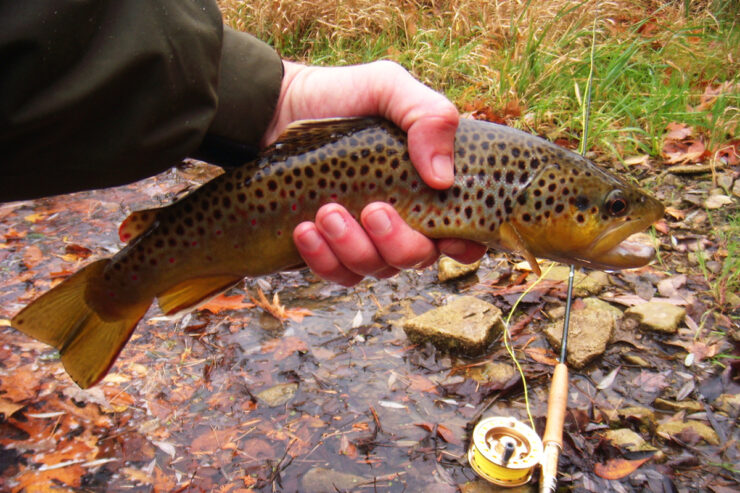
I have been unable to establish how many species of trout there are worldwide because there is so much disagreement about when a hybrid becomes a new species. Suffice to say there are well over 50 species in the world. I do know that, at present, there are 11 recognized species of trout in North America. But we need to concern ourselves here with only two, the Rainbow Trout, and the Brown Trout. The rest have such a limited range (mostly out west) that the majority of us don’t get to fish for them much. If you live in an area that has, say …Dolly Varden Trout, then you probably know more about them than I do.
Trout differ from other fish in that they have no spines in any of their fins. They also have an adipose (fat) fin on their back near their tails. This is indicative of a very primitive fish.
Both Rainbow and Brown trout are stocked just about anywhere they can survive a season. In the continental U.S., wherever you live, there is a good chance that there is a place to fish for trout within a reasonable drive from you. Brown trout are not even native to the U.S. They were brought here from Germany and Scotland in 1883, and 1885, respectively. They probably have the widest range of any U.S. trout due to their ability to withstand warmer water than other species. Browns have been stocked in almost every state in the continental U.S. Rainbows are native to the western United States, mainly the Pacific Coast Basin from Alaska down to Baja, California, and all the watersheds in between. In the late 19th century they began to be stocked just about everywhere they can survive for one season. Now, you can usually find a place to fish for Rainbows within a day or two drive.
Although Rainbow Trout are often stocked in lakes, they are mainly stream fish. The majority of Rainbows you will find have been raised in a hatchery. The average size of a stocked rainbow trout will be 2-8 pounds. They are used to humans and being fed pellets, but don’t let that fool you. Once they are released into the wild, their instincts kick in. They are keenly aware of their surroundings at all times, can see like an eagle, can hear the silence, and react just a shade slower than the speed of light. They learn to spook easily and recognize when something isn’t right. They also learn to be finicky about what they eat at times, and how to take advantage of hatches. It is rare that any Rainbows survive from one season to the next where they are stocked, and even more rare for them to be able to breed. But it does happen in some special locations.
Brown trout are similar to Rainbows in their abilities and behavior, only to a greater extent. Browns that have been born in the stream can theoretically live for 20 years or more and reach weights of over 15 lbs. The average U.S. Brown Trout weighs 3-10 pounds. This is because the Browns are very adaptable and can withstand warmer waters than Rainbows. They often are able to breed and establish sustainable populations where they were once stocked, meaning they get big, mean, and super-suspicious. They don’t trust anything, not even themselves.
There have been many objections to stocking trout, with claims that they are detrimental to native US species. With a few exceptions, the evidence would seem to indicate that these claims may be somewhat overstated. Granted, when placed in areas that have native trout species, they will compete and may replace the indigenous trout. But most of the places where they are stocked do not have any trout, and native species like smallmouth bass are more than able to defend themselves, even from Browns. Panfish will actually harass and terrorize trout when they find them, and bass has a particular fondness for eating trout that will fit into their bucket-sized mouths. As with most introduced species, when left alone and given enough time, the ecosystem usually adapts to accommodate the newcomers. Most of the places where trout have been stocked appear to have a perfectly healthy ecosystem.
Fishing For Trout: Basic Equipment And Gear
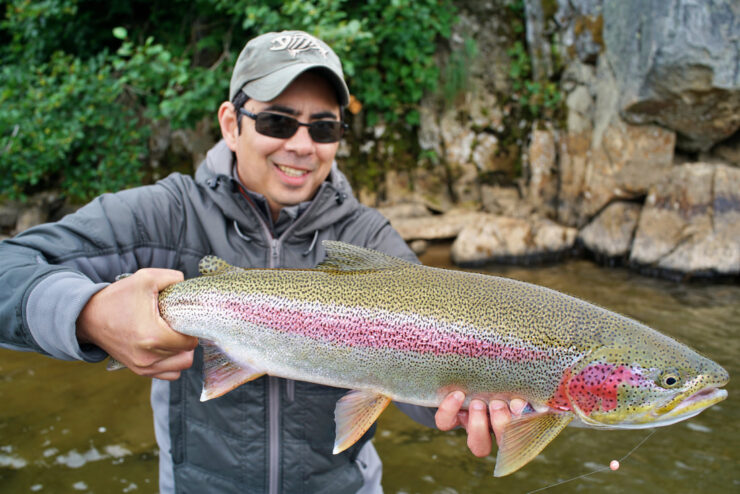
You don’t need a lot of expensive equipment for trout. Good light to medium action spinning or spin casting combo is fine, although, on a medium reel, I would replace the 8 lb. line they usually come with. I would re-spool with a 6 lb. test. An ultralight combo is perfect for stream fishing.
If you are fishing in a lake, then this is really all you need. Look for trout (both species) in the cooler parts of the lake, near the thermocline. They will most likely be near cover in the part of the lake with the most oxygen. Both species are fond of jumping and taking insects from the surface film, so watch for ripples and jumping fish to locate them.
In streams and rivers, it’s a little more involved. You’re going to have to get wet, so a good set of waders is almost a must unless you like being chilled in cold water. I prefer neoprene waders, but latex and canvas waders work fine. I would also recommend chest waders with stocking feet unless you know you will never step in water more than mid-thigh depth. Neoprene waders also serve a dual purpose if you kayak in winter. Add a Gortex jacket, and you are pretty much water-resistant from any water getting into the cockpit or missing the sprayskirt. Always get stocking foot waders and a separate pair of wading boots. The ones that come on boot-foot waders do not provide good enough traction, and you are stuck with them. With stocking foot waders, you can change boots any time you want, until you find the ones that are just right. Also, with boot-foot waders, if you tear the waders beyond repair, you lose the boots as well. Waders and boots are not very expensive. It doesn’t take long to suffer from exposure, even at 55⁰F. Use waders, even in summer.
You need a good pair of polarized sunglasses. You will be doing a lot of sight-fishing, meaning you need to be able to see into the water to target individual fish. Polarized sunglasses cut the glare from the surface of the water, and allow you to see through it like glass.
The only other special gear I recommend is a good fishing vest. A fishing vest is basically a wearable tackle box/creel. When you are wading, you’ll be moving around a lot, and you don’t want to have to figure out how to lug a tackle box around. Most vests have a built-in creel at the back, but you can always use a shoulder carry creel bag for your catch. They are a lot easier to get into than the back creel on your vest. I use the back creel for flat things I don’t have to get to very often. A vest keeps all of your gear within easy reach and organized on the water. And, they are not that expensive. You can get perfectly good ones for under $20.00 at places like Walmart, Academy Sports, Cabela’s, etc…
If you want to use live bait, make sure you check the local regulations for where you plan to fish. Many areas are “Artificials Only”. That means no minnows, worms, canned corn, or anything else that was alive at one time. A lot of places also consider salmon eggs, Power Bait, and Trout Nuggets as natural bait, even though they are all artificially manufactured. If live bait is legal, the three best baits are worms, salmon eggs, wax worms, and small minnows. The best-prepared baits are Berkley Power Bait and Trout Nuggets. Canned corn also works very well most of the time, but don’t throw any loose corn in the water. The Game Wardens regard that as “chumming” and it is very illegal to chum for trout. And be sure to take your can with you when you leave. At one of my nearby trout streams, I spend at least 30 minutes of every trip cleaning up people’s empty worm cartons, cans, and other trash. Please help keep the streams clean.
If you really want to enjoy catching trout, lures are the way to go. Great lures for both Rainbows and Browns are the Mepps Aglia, the red and white Daredevil in ultralight size, small Roostertails, and Blue Fox spinners, and the outstanding Trout Magnet. I’ve also done well with tiny Lazy Ikes, and minuscule crankbaits like the Yo-Zuri Snap Bean. Soft plastics like the Bassasin and small Sassy Shads work well for Brown Trout. Small crawfish and worm bodies on 1/16th oz. jig heads are great for sulky fish.
Trout Tactics: How To Catch Trout
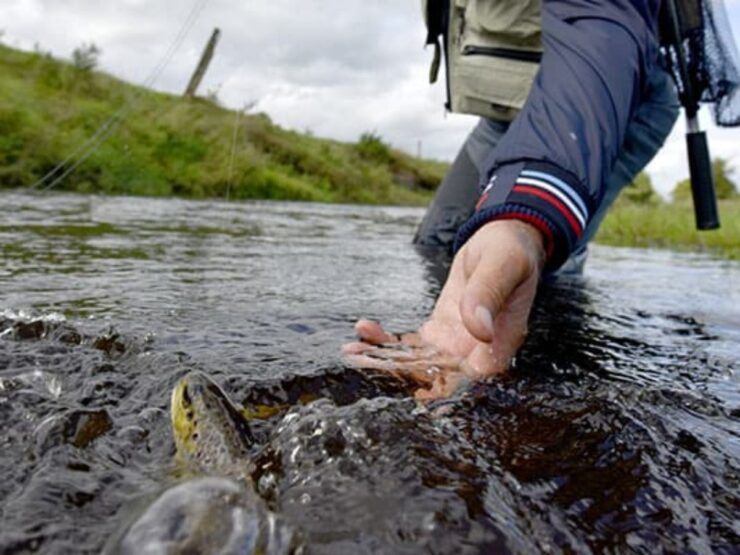
Before you start, there are a few things to pay close attention to:
- Always wade upstream. When you wade downstream, you kick up mud that lets the fish know you are coming. You also want to approach the fish from behind.
- Avoid casting a shadow on the water over the fish. If they see it, they will be gone just a bit faster than instantly.
- Keep splashing and noise to a minimum when moving. The trout can hear better than you can.
- Stay low when possible. The fish are looking up at you, against the skyline. I even wear a camouflage shirt and vest to blend in with the background and break up my silhouette. It makes a big difference.
- Never ‘Line’ any fish. The lining is when you see a nice fish and cast to it, but you didn’t notice the three fish between you and the one you want. When you cast over them and the line touches them, they will disappear faster than a Harry Houdini trick, and so will the one you were casting to.
- Do not use soap, aftershaves, or cleaning solvents for at least 4 hours before you go fishing. The smell will get on your equipment, and trout can smell better than a bloodhound.
- And lastly, make a trip to the restroom before you put on your chest waders and boots. Trust me on this one….
Finding trout in a lake isn’t very hard. Just look for ripples and jumping fish. They will be in the coolest parts with the most oxygen.
In rivers and streams, trout will hover behind anything the will break the current, and they will face upstream (that’s why you always wade upstream, so you will come up behind them…). They will be looking for anything that looks edible moving downstream and will dart out to grab it, then return to their ‘lay’. Most streams are clear enough for you to see the fish, especially with the sunglasses you should have with you, so it’s easy to target individuals. You will be stalking the fish, especially Browns, so you need to be as stealthy as possible.
The best places to find trout are at the beginning and end of pools and holes, at the bottom of rapids, rifles, and waterfalls, behind rocks and fallen timber, and any cuts in the bank. On curves, they will usually be on the inside edge on the downstream side, where it creates eddies.
Once you have located fish, pick one fish (preferably the one closest to you), and try to get within casting range, without getting into the trout’s peripheral vision. Trout only have two blind spots, directly in front of its nose and behind its tail. This means they have a peripheral vision field of about 160⁰ for each eye, so stay behind that field. For you, that means a bearing of around 45⁰. Once you are in a comfortable range, be sure you are on the other side of the stream from the fish so you don’t cast directly over it. Lining a trout will result in an unsuccessful stalk. Also, try not to splash or make too much commotion in the water. Remember, sound travels much better underwater. When you are ready, cast well ahead of the trout so that the lure will drift right by its lay as you retrieve. When the lure gets even with the lay, be prepared for a strike, but don’t anticipate. Wait until the trout has it in its mouth. I’ve yanked a lure away from a trout many times by being too keyed up.
There is a lot more to trout fishing, but this is enough to get you started. The main thing is that trout don’t live in ugly places. It’s not as much about catching trout as it is enjoying the beauty of the stream and the forests, hearing the sounds, and smelling the odors of nature. Try to become One with the environment. Trout fishing is as much meditation as it is a sport. Let it embrace you.
Adelaide Gentry, a seasoned kayaking enthusiast and expert, is the driving force behind KayakPaddling.net. With over a decade of experience navigating the world’s most challenging waterways, Adelaide combines her passion for adventure with a deep knowledge of kayaking to provide insightful and practical guidance for paddlers of all levels.
Related Posts:
- 14 Best Fishing Line for Baitcaster 2024 - For…
- 12 Best Rod For Daiwa BG 5000: - The Right Combo For Reel
- 9 Best Backpacking Fishing Rods 2024 - Lightweight…
- Heavy Duty Fishing: 11 Best Rods And Reels For Big Fish 2024
- 10 Best Kayak Fishing Net for Anglers 2024 - Top Picks
- 10 Best Fishing Reel for Salmon 2024 - Reels for Big Gamers

